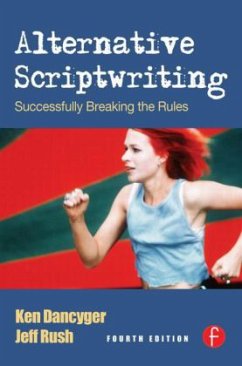Alternative Scriptwriting 4E is an insightful and inspiring book on screenwriting concerned with challenging you to take creative risks with genre, tone, character, and structure. Concerned with exploring alternative approaches beyond the traditional three-act structure, Alternative Scriptwriting first defines conventional approach, suggests alternatives, then provides case studies. These contemporary examples and case studies demonstrate what works, what doesn't, and why.
Because the film industry as well as the public demand greater and greater creativity, one must go beyond the traditional three-act restorative and predictable plot to test your limits and break new creative ground. Rather than teaching writing in a tired formulaic manner, this book elevates the subject and provides inspiration to reach new creative heights.
Alternative Scriptwriting 4E covers:
The melodrama and the thriller
Adaptations from contemporary literature
Writing non-fictional narratives for the feature documentary
An in-depth exploration of point-of-view and perspective as expressive of the film writer's voice
Voice-oriented genres--docudrama, the fable and experimental narrative
Non-linear storytelling-the narrative strategies that are necessary to make an open-architecture story work
Considerations for writing for DV that speak to the flexibility and improvisation this medium allows
Because the film industry as well as the public demand greater and greater creativity, one must go beyond the traditional three-act restorative and predictable plot to test your limits and break new creative ground. Rather than teaching writing in a tired formulaic manner, this book elevates the subject and provides inspiration to reach new creative heights.
Alternative Scriptwriting 4E covers:
The melodrama and the thriller
Adaptations from contemporary literature
Writing non-fictional narratives for the feature documentary
An in-depth exploration of point-of-view and perspective as expressive of the film writer's voice
Voice-oriented genres--docudrama, the fable and experimental narrative
Non-linear storytelling-the narrative strategies that are necessary to make an open-architecture story work
Considerations for writing for DV that speak to the flexibility and improvisation this medium allows
